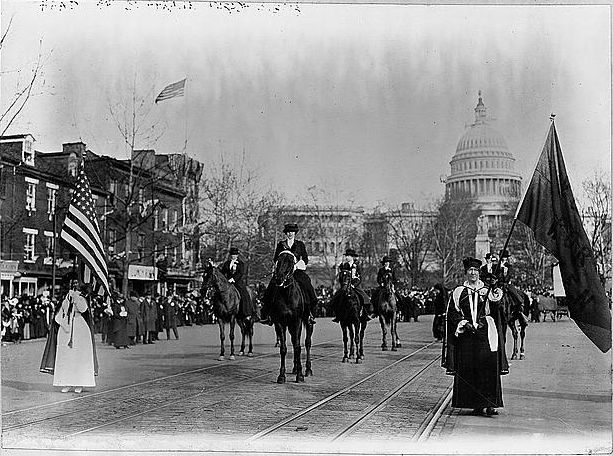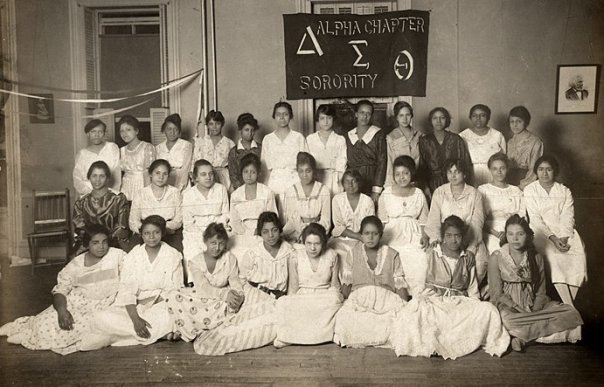For Women's History Month - Lesser-Known Stories
From LWV.org's history page: The League of Women Voters was officially founded in Chicago in 1920, just six months before the 19th amendment was ratified and women won the vote. Formed by the suffragists of the National American Woman Suffrage Association, the League began as a "mighty political experiment" designed to help 20 million women carry out their new responsibilities as voters.
But the experiment was not without controversy and overt racial bias, which the League has acknowledged with a pledge to do better and a commitment to righting the wrongs of our past and building a stronger, more inclusive democracy. See this August 2018 statement of apology by LWV's then-President Virginia Kase: Facing Hard Truths About the League’s Origin.
Black Women Suffragists - the story of Delta Sigma Theta at Howard University
On March 3, 1913, 5,000 women marched up Pennsylvania Avenue in Washington, DC, demanding the right to vote. Their “national procession,” staged the day before Woodrow Wilson’s presidential inauguration, was the first civil rights parade to use the nation’s capital as a backdrop, underscoring the national importance of their cause and women’s identity as American citizens. The event brought women from around the country to Washington in a show of strength and determination to obtain the ballot.
As Sidney Trent wrote for the Washington Post in August 2020...
The air was chilly, the trees still bare, yet the sky was clear and bright. March 3, 1913, was shaping up to be a perfect day for a grand and purposeful parade. Thousands of showily dressed suffragists had amassed in Washington from across the nation — indeed the world — to march along Pennsylvania Avenue on the eve of President Woodrow Wilson’s inauguration.
A young woman in striking white robes and a golden crown sat astride a white horse at the vanguard of the procession. Row upon row of suffragists followed, gliding by on floats and golden chariots or on foot bearing banners aloft amid the cacophony of marching bands and the buzzing crowd, wrote Rebecca Boggs Roberts in “Suffragists in Washington, D.C.: The 1913 Parade and the Fight for the Vote.” Professional women in thematic costumes — including writers stained with ink — marched alongside college women arranged by alma mater.
A spectator observing the vast sea of faces that day might have been excused for thinking that all the marchers were White. Yet a combing of the crowds would have revealed African American women, unlisted in the official program, who had for decades battled racism within the movement to take their rightful place in history.
Among them were the 22 young founders of Delta Sigma Theta Sorority Inc. at Howard University debuting as warriors for their race. There was Bertha Pitts Campbell, a vivacious young student who loved to dance but as valedictorian of her Colorado high school knew how to be serious, too. There was her sorority sister, Osceola Adams, a Georgia native with a dramatic flair who drew applause on the university stage. And marching nearby was Vashti Turley Murphy, a stylish graduate of D.C.’s Dunbar High who was pursuing a career as a teacher.
Segregated in the back of the suffrage parade by its White organizers, the Deltas and other African American women were pioneers in paving the way for future Black political activism. Yet their presence at the 1913 parade is still not widely known.
"We were there!"
The below video documentary, a 2006 film by Derek Fordjour and Jamar White about the Delta Theta Sigma Sorority of Howard University and 1913 Washington DC Suffrage March, is unique for its combination of dramatization and scholarly commentary. The 45-minute video has had more than a quarter million views since its posting on YouTube in October 2013:

